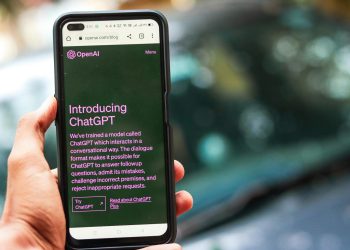Understanding Language Models
Language Modeling in Information Retrieval
You know that feeling when you're searching for something online, and it seems like the computer just gets you? That's what language modeling in information retrieval is all about. The core idea is that a document is a good fit for your search if it's got a good chance of coming up with the same set of words you used. We create a probabilistic model from each document and line them up based on how likely they are to match your search words (Stanford NLP).
If a doc is loaded with your search terms, it's scoring major points for relevance. This not only helps automate the process but makes it snappy too. It's kind of like having a super-fast librarian at your fingertips.
| Aspect | Description |
|---|---|
| Key Idea | A document's chance to generate your search words |
| Method | Building probability-driven models from text |
| Use | Prioritizing documents using search word probability |
Want to get geeky about how this brainy tech works? Peek into our how do large language models work section.
Language Models for Query Generation
But wait, there's more! Language models can cook up queries too. These brainiacs sprout searches that lead you to the jackpot of relevant info. They take what you throw at them and morph it into multiple search strings, widening your net and upping your odds of landing the good stuff.
| Feature | Benefit |
|---|---|
| Query Expansion | Makes your internet trawling wider |
| Diverse Queries | Boosts chances for relevant finds |
| Automation | Speeds up your hunting process |
Models like these supercharge how we sift through massive amounts of data. Looking for a detailed explainer? Check out our deep dive into applications of large language models.
By mixing these strategies, we turbocharge how we dig up info and whip up queries, cranking our search-game to max. Tweaking these models to snappier precision (fine-tuning language models) means we're always sharpening our tools for real-life situations. Want more on tech's cutting edge? Head over to our pages on generative AI models and see what's bubbling up next.
Large Language Model Fine-Tuning
Fine-tuning those big brainy language models (LLMs) is all about making them perform better at specific stuff. It’s like teaching them a focused skill or two, so they’re not just wandering around with their giant vocabularies but are actually helpful.
Process of Fine-Tuning LLMs
Taking a pre-trained model for a spin on new, smaller, more targeted datasets is the game here. We tweak the network's snazzy neural knobs and dials with extra training to get it smooth and ready for new tasks (Superannotate). This adjustment aims to make the model act more like a human pro in its specific field.
Here’s the usual drill:
- Get Your Datasets: Gather the best data for the gig you’ve got in mind.
- Boot Up Your Model: Start off with something big like GPT-3 or BERT.
- Train Away: Use examples to shape up the model’s behavior.
- Check Performance: Keep tabs on how it’s doing with test data.
- Rinse and Repeat: Tweak based on results and keep refining.
Types of Fine-Tuning Techniques
When it comes to sprucing up large language models, here's the lowdown:
Standard Fine-Tuning
The go-to method where you show the model data it needs to learn. Got a pile of customer chat logs? Feed them in so it learns to handle support tickets like a champ.
Instruction Fine-Tuning
This one's all about showing the model what's what. You give it the lowdown on how to tackle queries (Superannotate). This method is ace for complex tasks that need a guided approach.
Domain-Adaptive Training
Feed it books, articles, or papers from a specific niche. Want it to talk doctor? Train it with medical texts so it’s speaking fluent stethoscope.
Challenges in Fine-Tuning LLMs
Fine-tuning those big-league models isn’t without its hurdles:
Overfitting
One of the curveballs here is overfitting — the model might get too cozy with its training data, tripping up when seeing new stuff.
Computational Resources
These models are thirsty for power and storage. Running them can be pretty taxing, which might put off a few organizations.
Data Quality and Bias
If your training data’s wonky or biased, your model could wander astray, giving results you don't want, especially in delicate areas.
Hyperparameter Tuning
Nailing the right settings, like how fast it learns or how much data it chews on at once, is crucial. A bad call here can throw everything off or keep it running forever.
These issues mean you’ve got to really plan and keep an eye on things so your fine-tuning is beneficial, not troublesome.
By grasping these basics, we can push generative AI models to their potential in stuff like information retrieval or data crunching. Want to know how fine-tuning stacks up against cutting-edge methods like Retrieval Augmented Generation (RAG)? Check out our section on Fine-Tuning vs. RAG for Task Optimization.
Enhancements in Large Language Models
Large language models (LLMs) have made huge leaps forward, especially in getting better at pulling up information right when you need it. We're gonna chat about how these tech wonders have grown from RNNs to transformers, how they fetch knowledge, and why mixing a couple of models together can give you an even better bang for your buck.
Evolution from RNNs to Transformers
Transformers have flipped the script in natural language processing (NLP), totally changing how data is handled in sequence. So, unlike Recurrent Neural Networks (RNNs) that take it one step at a time, transformers take a whole bunch at once. This setup not only speeds things up but also makes sure you get the context down pat, whether it’s a sentence or whole paragraph. Big shots like BERT and LaMDA are riding the transformer wave, knocking out all kinds of NLP tasks (Altexsoft).
| Model Type | Sequential Processing | Parallel Processing | Popular Models |
|---|---|---|---|
| RNNs | Yes | No | LSTM, GRU |
| Transformers | No | Yes | BERT, GPT-3 |
Mechanisms for Knowledge Retrieval
LLMs have a knack for pulling info right off their memory banks with easy-peasy tricks. Hats off to the tech wizards at MIT who found that LLMs use plain linear functions to pick and decode the facts. Every function links to a fact type, helping out in things like translating languages or whipping up new code (MIT News). This trick ensures answers are spot on and meaningful for all kinds of uses. Want to peek under the hood? Check out our piece on how large language models work.
Hybrid Models for Improved Performance
Hybrid models take LLMs up a notch by pairing what they 'know' with some good old-fashioned external memory. This teamwork helps tackle a bunch of problems, like needing to tweak what’s remembered or showing where answers come from. Plus, hybrid models cut down on creative nonsense termed "hallucinations," making answers more dependable. Retrieval Augmented Generation (RAG) is a go-to for this job, beefing up LLMs with extra info, like product lists or user histories (Link).
| Model Approach | Memory Type | Key Feature | Benefit |
|---|---|---|---|
| LLM Only | Parametric | Broad Language Understanding | Generalization |
| Hybrid | Parametric + Non-Parametric | Data Augmentation | Targeted Data Precision |
The move from RNNs to transformers, snazzy ways to grab info, and using hybrid setups show how LLMs have really come into their own. These changes are steering the ship to smarter and more precise data handling, making them can't-live-without tools in tech and business. Got some curiosity to quench about how this translates to real-world uses? Dip into our article on applications of large language models.
Practical Applications of Language Models
Language models offer cool new tricks for tech everywhere. Let's take a ride through their roles in natural language processing (NLP), speech-friendly software, and sorting out structured data.
NLP Tasks and Language Models
Language models are the unsung heroes that make NLP tick. They help churn out content, read the room with sentiment analysis, and even have a go at chit-chat as virtual buddies. These models, crafted from mountains of text, can guess the next word in a sentence like a linguistic crystal ball. They lay the foundation, ensuring everything sounds just right and fits together (Altexsoft).
Nifty NLP Tasks:
- Content Creation: Whipping up articles or reports automatically.
- Sentiment Analysis: Figuring out if a text's mood is cheery or dreary, a must-know for business smarts.
- Conversational AI: Bringing life to chatbots and digital pals, making chats more lively.
Speech-Enabled Wonders
Language models transform speech-enabled apps with superpowers. They tackle tasks like translating, helping code, and trimming texts down to size. They're the Swiss Army knife of human language tech (Altexsoft).
Examples:
- Machine Translation: Flipping spoken-writ words from one tongue to another.
- Code Completion: Helping developers with handy code bits before they even ask.
- Text Summarization: Shortening text while keeping the big picture intact.
Fields Loving the Language Models:
| Field | Cool Uses |
|---|---|
| Healthcare | Chatting up patients, diagnostic Q&A |
| Education | Translate on the fly, learning pals that interact |
| Customer Service | Virtual helpers, auto-solving customer questions |
| Software Development | Auto coders, spotting and fixing coding oopsies |
Cracking Structured Data Challenges
Language models join the dots between chaos and order in structured data analysis. Catching on to context, they sort, fetch, and sum up data without breaking a sweat.
- Data Classification: Tagging data based on what matters.
- Information Retrieval: Lightning-fast info finding based on what you seek.
- Data Summarization: Pulling out the juicy bits from big chunks of data.
Language models shine in info retrieval, matching documents and queries by seeing how likely it is for the doc to create the query, all about the word frequency (Stanford NLP).
For more juicy details on language model magic, peep our musings on applications of large language models and natural language processing models.
Limitations of Large Language Models
Potential Biases in Output
Large Language Models (LLMs) eat up internet data like chips - except that data can contain cultural slants. And just like chips, a little bias here, another there, and you've got a whole snack mix of prejudices popping up in these models. That's why it's key to keep your antenna up when using LLMs for info gathering.
To tame these bias beasts, we gotta be the puppet masters right, nudging LLMs responsibly and avoiding any dodgy outputs. Picking up a bias checker’s toolbox can help catch any sneaky slants before they slip through. Dive into our deep dive on going bias-free here.
Issues with Handling Structured Data
LLMs are the cool kids when dealing with a bunch of hodgepodge media - like text, pics, or even beats. But give them an Excel sheet, and they're like a cat with water. They're not built for the nitty-gritty of rows and columns. So if you find yourself knee-deep in spreadsheets, you might want a specialized buddy (structured data analysis).
| Data Type | LLM Performance Rating (1-10) |
|---|---|
| Unstructured | 10 |
| Structured | 3 |
LLMs do well with freewheeling text but might fumble with the orderly world of tables. It pays to think about teaming up with other tech for structured tasks. For businesses that live in structured data land, a tech cocktail could be the solution.
Responsible Usage and Mitigation of Biases
Making LLMs our virtual allies means being clued up about where they can trip up, especially with biases. Here’s the golden rulebook:
- Keep your training datasets shiny and renewed to dodge bias buildups.
- Set up some serious ground rules for what LLMs spit out.
- Polish up those outputs with post-processing to weed out potential hiccups.
| Mitigation Strategy | Effectiveness Rating (1-10) |
|---|---|
| Dataset Audits | 8 |
| Content Filters | 7 |
| Post-Processing Techniques | 6 |
Being open and honest about what these models can and can't do is like putting up road signs to prevent crashes. This helps everyone from going down the wrong path. Check our insights on using LLMs without bias drama here.
Keeping tabs on LLMs and giving them regular check-ups is our gig to make sure they’re worth the trust. If you’re curious about beefing up these models, head over to our piece on enhancements in large language models.
Future Trends in Large Language Models
When we look at what's next for big ol' language models and their possibilities in pulling useful info, a few cool trends are popping up.
Making LLMs Better and Faster
Boosting large language models (LLMs) isn't just about crazy fast speeds; it's about getting the most bang for your computational buck. You know how sometimes less is more? That's the deal here. Shrinking their size without losing smarts by snipping unneeded bits, using fewer bits to store weights, and letting a smaller model cozy up to a big one for the brainy stuff are all in the mix. And let's not forget those savvy hybrids blending LLMs' brains with outside memory to tackle changes and keep things fresh without wandering off into fantasy land (source).
| Trick | What It Does |
|---|---|
| Snipping Lower Bits | Get rid of fluff that's just taking up space and time. |
| Memory Tune-Up | Keep the smarts, cut the junk, and shrink down the weight so models are kinder to capacity and speed. |
| Learning from the Big Guy | Train a smaller 'student' model to take notes from a big 'teacher' model, so you get the goods without the weight. |
| Hybrid Smarties | Pairing LLMs with memory tweaks to keep it current and grounded, less head-in-the-clouds guesses, more informed responses. |
Bringing a Little RAG
Retrieval Augmented Generation (RAG) is like giving models a cheat sheet they can pull from—so they sound smart and stay accurate. Pairing their text-making skills with actual snippets from up-to-date databases really comes in handy for stuff like keeping an always-fresh product page, remembering who's bought what, or holding onto patient notes (source).
RAG lets LLMs tap into mountains of data they've never seen before, making sure they don't just blabber on about old stuff but actually hit the mark with new, factual info—like asking your phone's voice assistant for today's weather while it's still brewing outside.
Check out where we're putting RAG to work in tries on language models and cutting-edge language tech.
Picking: Tweaking with Fine-Tuning vs. RAG Magic
Fine-tuning and Retrieval Augmented Generation (RAG) are like two flavors of ice cream—each good for certain treats. Fine-tuning is about schooling an LLM on something just for it, so it learns exactly how you want it. It's power-hungry, though, and demands some serious tech skills (source).
On the flip side, RAG is the go-to when you want a model to keep its finger on the pulse with the freshest data without rebuilding the mold. Think customer service chats or crafting special content that's spot-on, thanks to living, breathing databases.
| Thing to Consider | Fine-Tuning | RAG Power |
|---|---|---|
| Why Do It | Crafting a model for some brand-new tasks using just the task's special recipes. | Tapping into live info soups for answers that're always in-the-know. |
| What You Need | Ultra high-tech gear and heaps of expertise. | Just enough to hook up to real-time data streams. |
| Best Fit For | Tasks that need special attention and a whole lot of brain training. | Scenarios where constant updates or come-as-listed info is crucial, like service or creating user-centric content. |
| Can It Stretch? | Pretty much stuck, exactly as the teacher taught it. | Vastly adaptable by fetching up-to-the-minute knowledge. |
For extra info, head over to our articles on tuning the minds of language models and mixing it up with RAG.
LLMs are always getting sharper, especially with these improving tricks and mix-ups, making them fit right into whatever job they take on, especially in the creativity of AI or who knows what else that's right around the corner.










